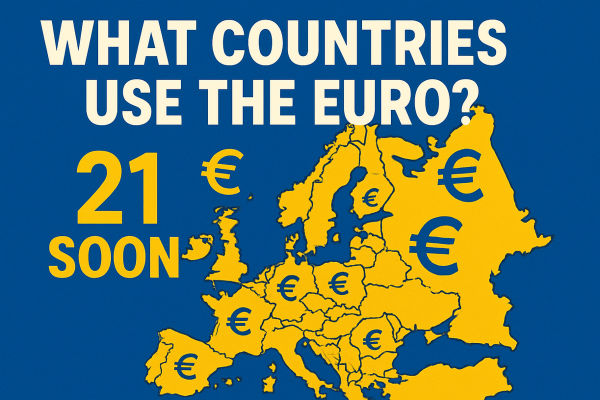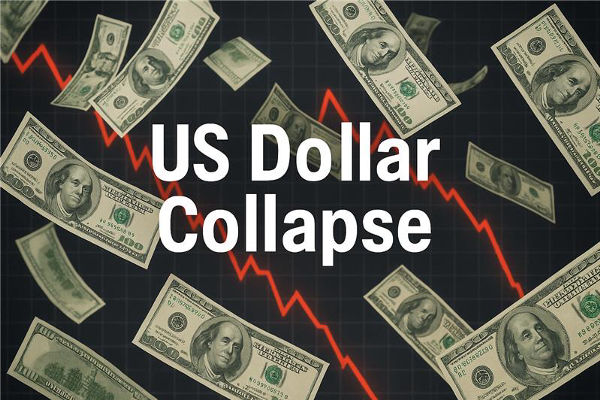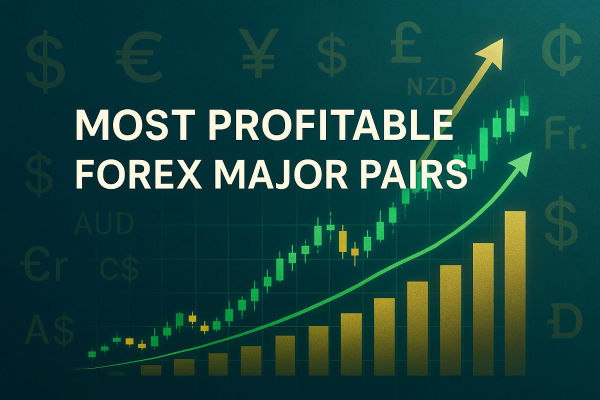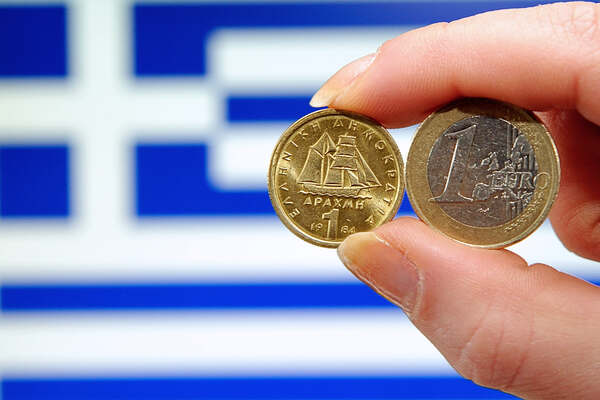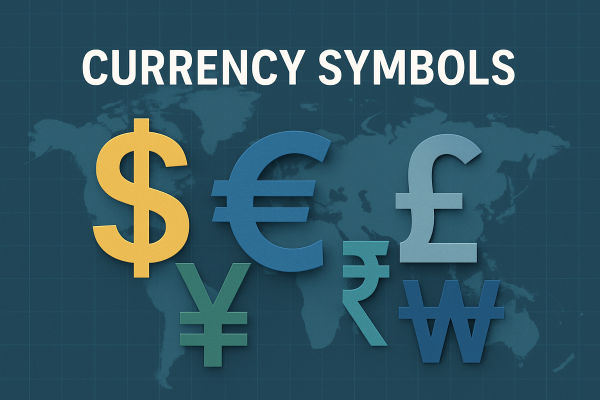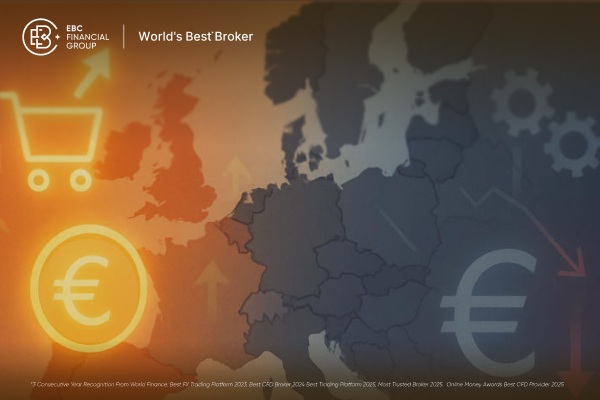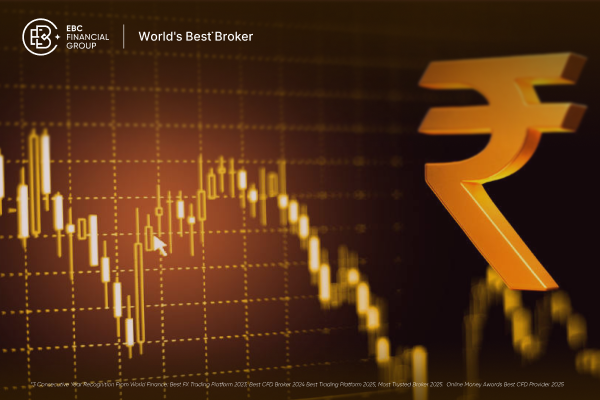In 2025, the euro has strengthened significantly against the U.S. dollar, up roughly 8.49% since the start of the year, reshaping global trade dynamics, investment flows, and even corporate earnings.
This article examines whether the euro is genuinely stronger than the dollar now, what factors are influencing this shift, and the potential duration of this trend.
Is the Euro Stronger Than the Dollar? 2025 Snapshot
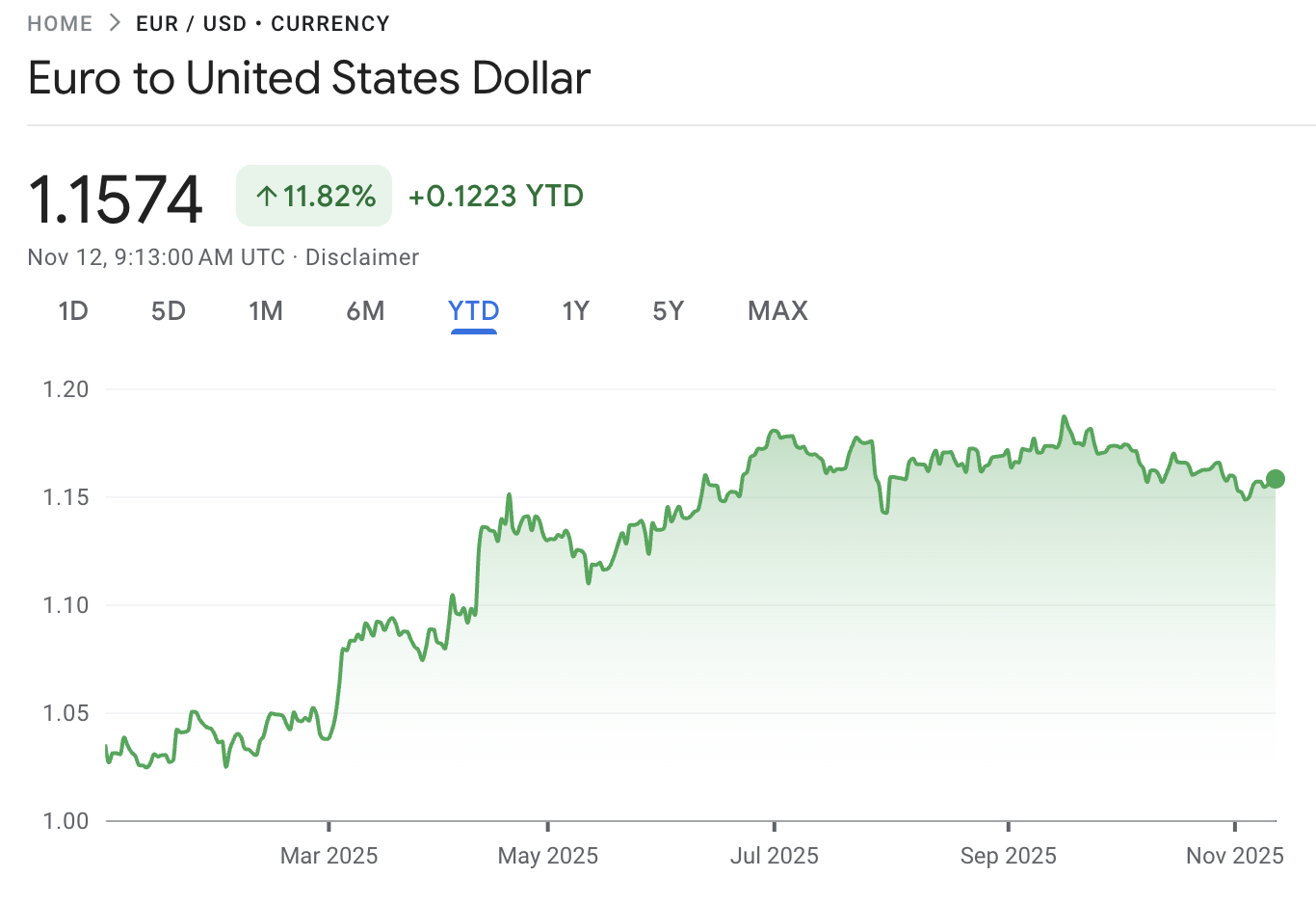
As of 12 November 2025, the Euro/US Dollar (EUR/USD) exchange rate stands at about 1.1574 USD per EUR.
According to International Monetary Fund (IMF) data, the U.S. dollar’s share of global official foreign‑exchange reserves is about 57.7%. Meanwhile, the euro’s share is at approximately 20.1%, its highest since late 2022.
In summary, the euro remains near the 1.157 level versus the dollar, and reserve‑currency data show the dollar continuing to yield ground (albeit slowly) to the euro.
What's Fueling the Euro's Strength?
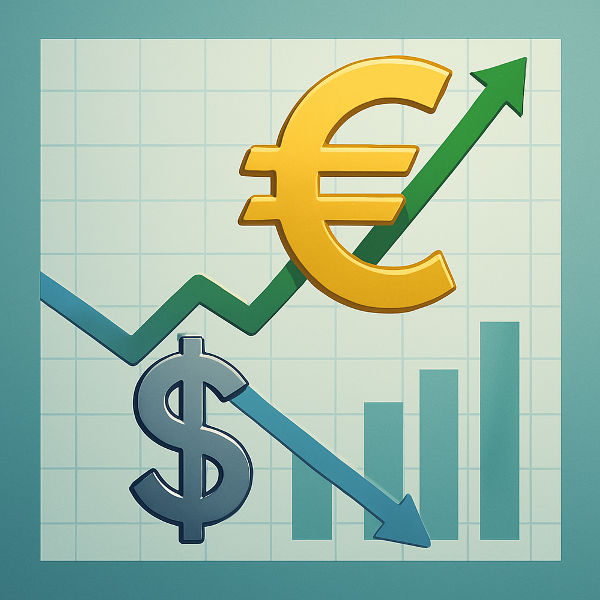
1. Diverging central‑bank policies
The European Central Bank (ECB) has held interest rates steady for several meetings and emphasised that restarting bond purchases is still some time away, signalling a more cautious stance rather than a rush to ease.
Meanwhile the Federal Reserve and markets see the U.S. rate path as relatively more constrained, supporting the euro against the dollar.
A higher‑for‑longer euro‑zone rate outlook (or at least less downwards pressure) vs. a U.S. dollar facing fewer tailwinds helps support the euro.
2. Slow shift in global reserve currency patterns
According to the International Monetary Fund (IMF), the U.S. dollar’s share of official foreign‑exchange reserves fell to ~56.3% in Q2 2025 from ~57.8% in Q1.
The euro’s share rose to ~21.13% in Q2.
This gradual de‑emphasis of the dollar and increased weight for the euro supports structural narratives favouring the euro.
3. Euro‑zone resilience amid moderate growth
The ECB revised its growth projection for the euro‑zone up to ~1.2% for 2025, from an earlier ~0.9%.
While growth remains modest, inflation forecasts are stable and the euro zone appears to be navigating through global headwinds without outright collapse.
Effect: A moderate growth + inflation scenario combined with policy stability gives the euro an aura of “less‑bad” relative to more volatile alternatives.
4. U.S. external risks and structural headwinds
While direct references to “Trump‑era tariffs” are less relevant today, the dollar still faces headwinds such as high fiscal deficits, global diversification away from U.S. exposures, and the risk of chronic current‑account and public‑debt pressures.
The “exorbitant privilege” of the dollar is under mild scrutiny.
These structural pressures, in combination with stronger competing currencies and reserve shifts, give the euro a relative tail‑wind.
Euro to Dollar Historical Performance Overview: How the Euro Overtook the Dollar
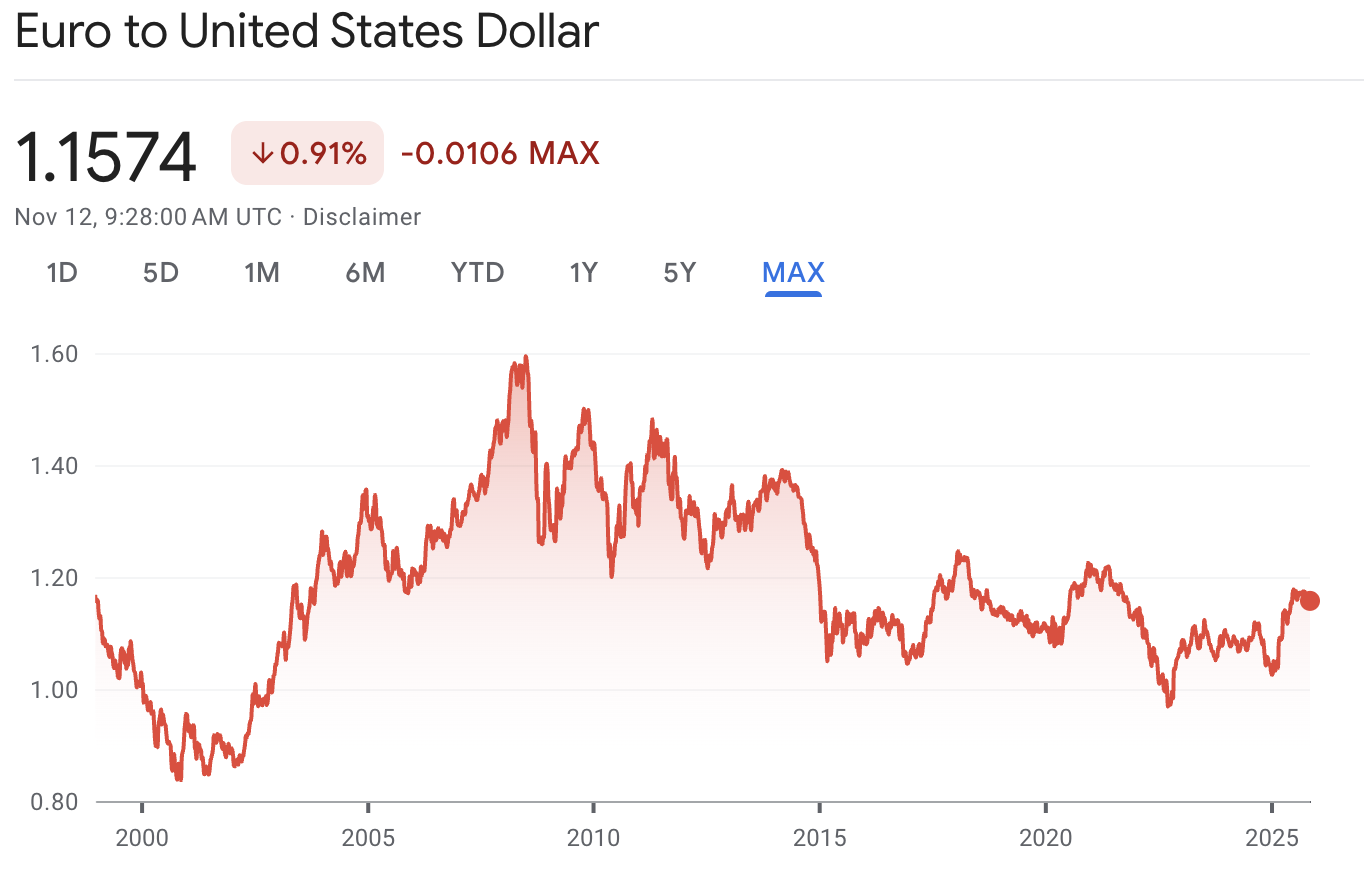
The euro and the U.S. dollar have a long, dynamic history of competition in global currency markets. Over the past two decades, the EUR/USD exchange rate has swung from parity (1.00) to peaks above 1.60, reflecting shifts in monetary policy, economic growth, and geopolitical stability.
1. Early History and Structural Parity
When the euro was launched in 1999, it initially weakened against the dollar, dropping below 0.90 in its early years due to scepticism around the EU's economic integration.
But by 2002–2003, confidence in the eurozone improved, and the euro began to rise steadily, eventually surpassing the dollar by 2004.
2. Peaks and Pullbacks (2007–2014)
The euro reached a high of 1.60 USD in mid-2008, just before the global financial crisis. It was driven by:
The housing collapse burdened a weaker U.S. economy
Higher eurozone interest rates from the ECB.
A strong belief in the euro as a credible reserve currency
However, following the 2008 crash and subsequent eurozone sovereign debt crisis, the euro began to lose ground again.
From 2010 to 2015, Greek defaults, political unrest, and the ECB's sluggish policy actions led to the euro's decline, reaching a low of 1.05 by early 2015.
3. The Dollar Reasserts Dominance (2015–2022)
During this period, the dollar dominated global FX markets due to:
The Fed's aggressive monetary tightening from 2016 to 2019.
Europe's slow economic recovery and negative interest rates.
Political fragmentation in the EU and Brexit uncertainties.
By 2022, the euro briefly dipped below parity (0.96 USD), a symbolic low not seen since 2002 driven by Russia's invasion of Ukraine, an energy crisis in Europe, and rapidly rising U.S. interest rates.
4. Euro's Resurgence and Dollar's Retreat (2023- 2025)
The turning point came post-2023:
U.S. fiscal imbalance and ballooning debt spooked foreign investors.
Global de-dollarisation began to accelerate as brics and oil exporters diversified reserves.
European economic resilience, led by green investment, AI infrastructure, and German reindustrialisation, helped boost confidence in the euro.
The ECB began slowing its monetary easing in 2024, while the Fed signalled prolonged cuts in 2025.
By mid-2025, the euro had robustly surpassed the dollar, climbing over 1.16 USD, indicating a complete turnaround from the lows of 2022. Global investors also raised their euro holdings, and central banks adjusted their reserves in favour of euros, further strengthening the trend.
Benefits and Drawbacks of a Strong Euro
| Benefits |
Drawbacks |
|
- Increases purchasing power for eurozone consumers through lower import costs.
- Broadens global influence and strengthens capital inflows into euro-denominated assets.
|
- Weakens eurozone export competitiveness; large exporters have revised forecasts lower.
- Risks of eurozone inflation falling too quickly below the ECB's 2% target.
|
EUR/USD Forecasts: Will the Euro Sustain Its Lead?
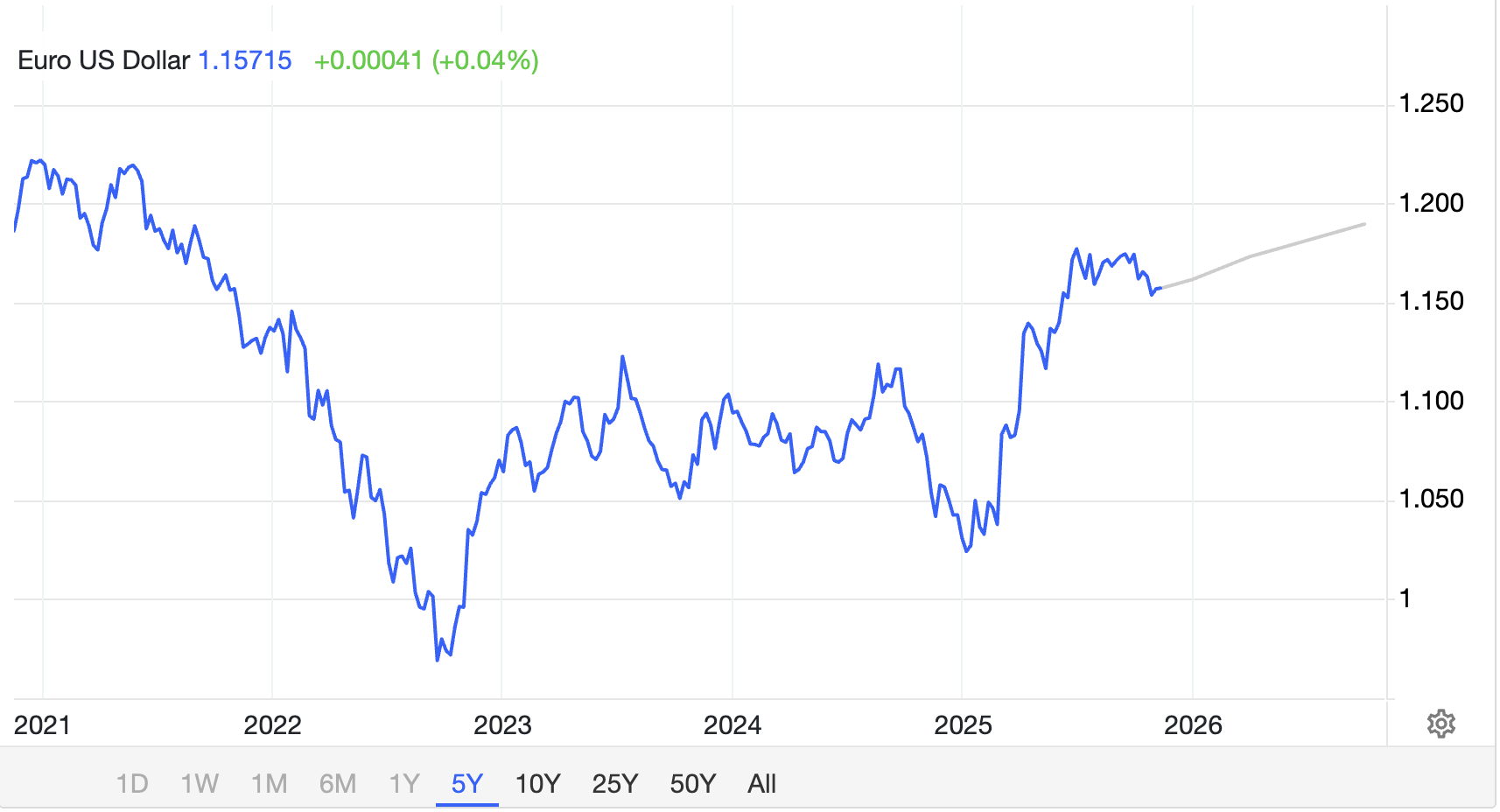
Major institutions vary widely in their future forecasts:
UBS now expects EUR/USD around ~1.23 by end‑2025, citing further U.S. rate cuts and dollar‑weakness.
Wells Fargo has revised its outlook, forecasting a peak near ~1.22 by mid‑2026, and sees EUR/USD remaining above parity rather than plunging to ~0.98.
Commerzbank expects EUR/USD to reach ≈ 1.16 by end‑2025 and possibly ~1.20 by end‑2026, rather than the earlier 1.08 scenario.
Institutions such as Societe Generale and Rabobank have softened the view of a EUR/USD drop to parity, instead pointing to a range of ~1.15‑1.20, given improved eurozone resilience.
In summary, if European economic momentum strengthens and the Federal Reserve adopts a dovish stance, EUR/USD in the ~$1.20‑1.30 range by mid‑2026 is plausible.
Conversely, if the U.S. economy outperforms and the Fed remains hawkish, a drop to ~$1.05‑1.10 remains within the spectrum of risk.
What It Means for Traders and Investors
Risk management is essential: a rebound in USD or surprise U.S. growth data could reverse EUR/USD gains.
International investors in U.S. equities have benefited significantly from euro strength; those holding eurozone assets, however, may see reduced export earnings.
Forex traders should monitor upcoming U.S. CPI, ECB commentary, geopolitical developments and tariffs for potential volatility.
Frequently Asked Questions (FAQ)
1. Is the euro stronger than the dollar in 2025?
Yes. As of November 2025, EUR/USD stands at ~1.157, marking significant strength compared to earlier years.
2. What factors are driving the euro's strength?
Diverging ECB and Fed policies, eurozone economic resilience, global de-dollarisation, and structural U.S. fiscal and trade pressures.
3. What are the risks for investors and traders?
A stronger euro can hurt eurozone exporters and reduce inflation, while unexpected U.S. growth or Fed hawkishness could push EUR/USD down toward ~$1.05‑1.10.
Conclusion
In conclusion, the euro is significantly stronger than the dollar in 2025. However, whether this trend continues depends on the central bank's actions, geopolitical tensions, and broader investor sentiment.
Models suggest a possible range between $1.12 and $1.30, reflecting various economic scenarios. For investors and businesses, the key takeaway is to monitor Fed-ECB divergence, hedge exposures, and consider international diversification as the backdrop shifts.
Disclaimer: This material is for general information purposes only and is not intended as (and should not be considered to be) financial, investment or other advice on which reliance should be placed. No opinion given in the material constitutes a recommendation by EBC or the author that any particular investment, security, transaction or investment strategy is suitable for any specific person.














